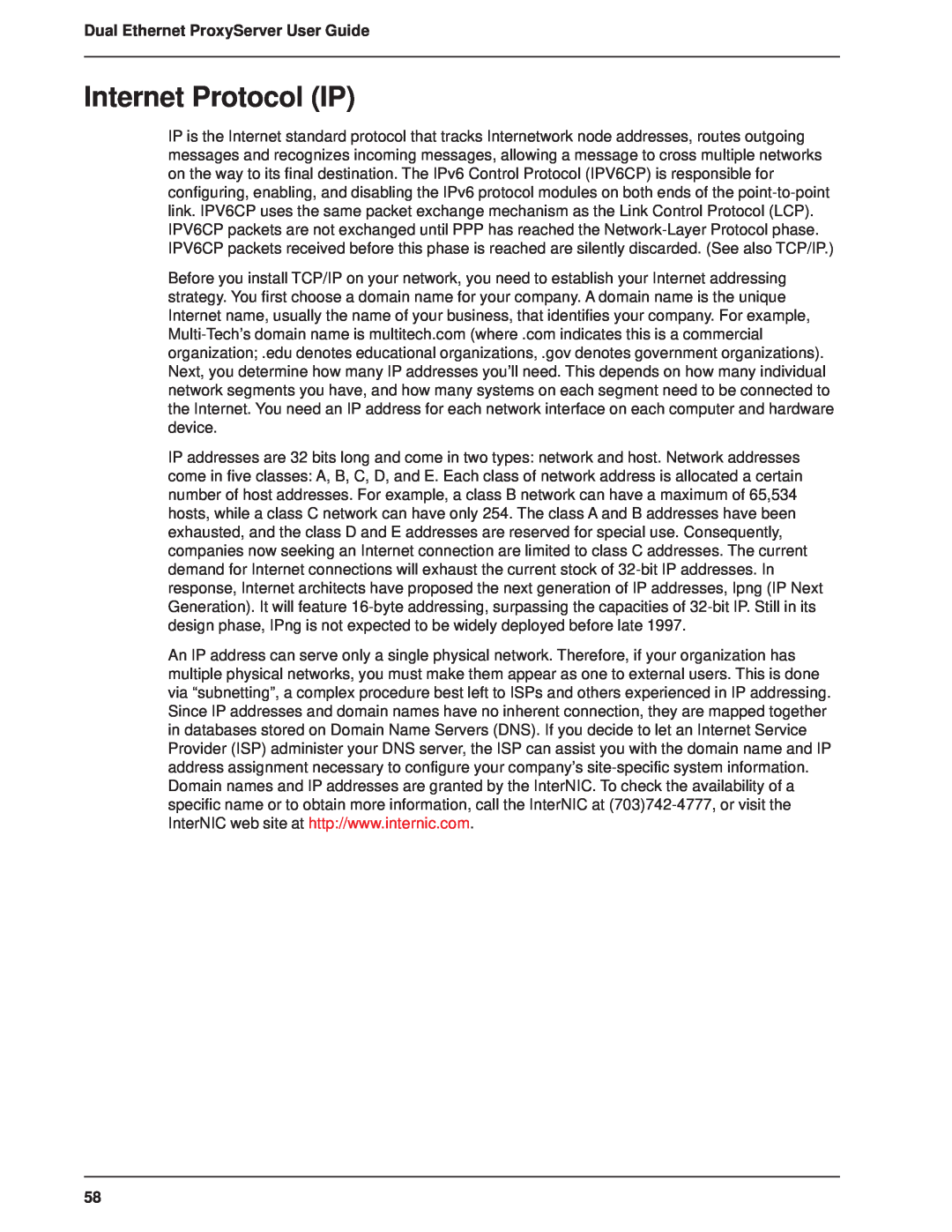
Dual Ethernet ProxyServer User Guide
Internet Protocol (IP)
IP is the Internet standard protocol that tracks Internetwork node addresses, routes outgoing messages and recognizes incoming messages, allowing a message to cross multiple networks on the way to its final destination. The IPv6 Control Protocol (IPV6CP) is responsible for configuring, enabling, and disabling the IPv6 protocol modules on both ends of the
Before you install TCP/IP on your network, you need to establish your Internet addressing strategy. You first choose a domain name for your company. A domain name is the unique Internet name, usually the name of your business, that identifies your company. For example,
IP addresses are 32 bits long and come in two types: network and host. Network addresses
come in five classes: A, B, C, D, and E. Each class of network address is allocated a certain number of host addresses. For example, a class B network can have a maximum of 65,534 hosts, while a class C network can have only 254. The class A and B addresses have been exhausted, and the class D and E addresses are reserved for special use. Consequently, companies now seeking an Internet connection are limited to class C addresses. The current demand for Internet connections will exhaust the current stock of
An IP address can serve only a single physical network. Therefore, if your organization has multiple physical networks, you must make them appear as one to external users. This is done via “subnetting”, a complex procedure best left to ISPs and others experienced in IP addressing. Since IP addresses and domain names have no inherent connection, they are mapped together in databases stored on Domain Name Servers (DNS). If you decide to let an Internet Service Provider (ISP) administer your DNS server, the ISP can assist you with the domain name and IP address assignment necessary to configure your company’s
58
